A Time Too Short
Helping Youth With Loss and Grief
By Stephen Gray Wallace, M.S. Ed
The loss of a young person, by accident or by design, devastates families, communities and institutions. It may also prompt a series of questions, some answerable and some not. One thing is for sure: parents and other caring adults benefit from information to best guide children and teenagers processing loss and grief.The good news, according to the Centers for Disease Control (CDC), is that the death rate for youth ages 19 and younger dropped about 30 percent from 2000 to 2009, with deaths dipping from about 12,400 to about 9,100. On the other hand, accidental injuries remain the leading cause of death for youth ages 1 to 19. On average, one child dies every hour from fires, falls and other accidents, including automobile crashes, drug overdoses, poisoning, suffocation, and drowning.
Of course, intentional deaths are a national epidemic. The American Foundation for Suicide Prevention reports that suicide is the fourth leading cause of death among those 5 to 14 years old and the third leading cause of death among those 15 to 24 years old. More concerning is a June 2012 report from the CDC detailing a rise in the number of attempted suicides among teenagers from 6.3 percent in 2009 to 7.8 percent in 2011.
Of all forms of death among young people, suicide may be the most difficult to understand and recover from. It begs the questions, “Why?” and “Was there something I or others could have done to prevent this from happening?”
The whys of suicide are not always known or obvious. But what we do know is that young people may lack the longevity to recognize that even feelings of overwhelming sadness usually dissipate over time. As I wrote in my book Reality Gap, “Depressed teens often have difficulty asking for help. Others don’t believe intervention is possible – or at least that it will make a difference in relieving their suffering. Lacking sufficient life experience … many teens believe the way they feel is the way they will always feel.”
While not all suicides are well thought out and some may, in fact, be impulsive responses to acute emotional pain, it is important to continue the dialogue about warning signs of distress or depression, including these:
- Feelings of sadness or hopelessness
- Declining school performance
- Loss of pleasure/interest in social and sports activities
- Sleeping too little or too much
- Changes in weight or appetite
- Nervousness, agitation or irritability
- Substance abuse
Additional and important information is available from the American Academy of Pediatrics, including a discussion of myths and facts and about suicide.
As with all risk behavior, when it comes to youth deaths, medical, mental health and education experts focus on prevention and on support for survivors.
Resources for prevention include the national SADD organization (Students Against Destructive Decisions), the nation’s leading peer-to-peer education, prevention and activism organization. SADD offers tools related to such issues as underage drinking, other drug use, impaired and distracted driving, violence and suicide (www.SADD.org). Similarly, SADD has launched a parent site, www.ParentTeenMatters.org, as a platform for additional information, including a question and answer section.
To help young people who have lost a friend or loved one (of any age), the National Association of School Psychologists has prepared Helping Children Cope With Loss, Death, and Grief – Tips for Teachers and Parents and Death and Grief: Supporting Children and Youth. The latter details the grieving process, or “stages of grief.”
Finally, for survivors of suicide, there are many resources online, including ones made available by the Alliance of Hope, the American Association of Suicidology, and the American Academy of Family Physicians.
The loss of a young person by whatever means is a tragic, debilitating event that requires information and support for all who remain behind. After all, their child, friend, or family member lived for a time too short.
Stephen Wallace is an associate research professor and director of the Center for Adolescent Research and Education (CARE) at Susquehanna University in Selinsgrove, Pennsylvania. He is also senior adviser for policy, research and education for SADD and director of counseling and counselor training at Cape Cod Sea Camps. He has broad experience as a school psychologist and family counselor and writes for Psychology Today, Camping Magazine, and newspapers nationwide.
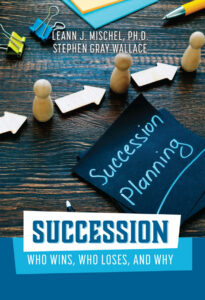 Succession offers “user’s guide” to small and family owned businesses through the stages of planning, employment. and ownership policies, shareholder meetings, family health emergencies, business planning, and alignment/engagement of employees. Covering both the positives and potential pitfalls inherent in the planning and implementation process, Succession represents a realistic roadmap to one of the more difficult periods of business ownership.
Succession offers “user’s guide” to small and family owned businesses through the stages of planning, employment. and ownership policies, shareholder meetings, family health emergencies, business planning, and alignment/engagement of employees. Covering both the positives and potential pitfalls inherent in the planning and implementation process, Succession represents a realistic roadmap to one of the more difficult periods of business ownership.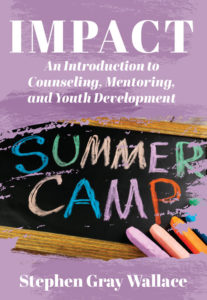 Stephen’s new book, IMPACT – An Introduction to Counseling, Mentoring, and Youth Development, offers insightful commentary on the important role of mentors in the lives of children and teens. While it specifically addresses camp counselors, it is equally relevant for all key youth influencers, including parents, teachers, and coaches. …
Stephen’s new book, IMPACT – An Introduction to Counseling, Mentoring, and Youth Development, offers insightful commentary on the important role of mentors in the lives of children and teens. While it specifically addresses camp counselors, it is equally relevant for all key youth influencers, including parents, teachers, and coaches. … This is an important time in teenagers’ lives — when they will develop driving habits that can be good and bad. Parents need to take an active role in helping teens develop safe driving behaviors because teenagers are involved in more car accidents than any other age group. …
This is an important time in teenagers’ lives — when they will develop driving habits that can be good and bad. Parents need to take an active role in helping teens develop safe driving behaviors because teenagers are involved in more car accidents than any other age group. …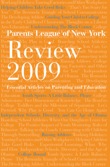 The Parents League Review is an annual literary journal with articles on parenting and education.
The Parents League Review is an annual literary journal with articles on parenting and education.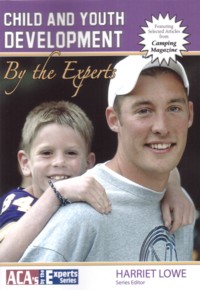 Child and Youth Development features eighteen articles that have been carefully selected from past editions of Camping Magazine, including Rites of Passage: Camp Pays Off in Youth Development, Happiness, Health, and Safety,” written by SADD Chairman and CEO Stephen Wallace. The contributing writers are recognized as authoritative voices in the field of child and youth development. Produced in cooperation with the American Camp Association. …
Child and Youth Development features eighteen articles that have been carefully selected from past editions of Camping Magazine, including Rites of Passage: Camp Pays Off in Youth Development, Happiness, Health, and Safety,” written by SADD Chairman and CEO Stephen Wallace. The contributing writers are recognized as authoritative voices in the field of child and youth development. Produced in cooperation with the American Camp Association. … This new book gives high school students the inside scoop on figuring out who they are and where they want to go by offering teens the kind of comprehensive, down-to-earth advice they need and want. …
This new book gives high school students the inside scoop on figuring out who they are and where they want to go by offering teens the kind of comprehensive, down-to-earth advice they need and want. … LOVE THAT BOY is a uniquely personal story about the causes and costs of outsized parental expectations. What we want for our children—popularity, normalcy, achievement, genius—and what they truly need—grit, empathy, character—are explored by National Journal’s Ron Fournier, who weaves his extraordinary journey to acceptance around the latest research on childhood development and stories of other loving-but-struggling parents.
LOVE THAT BOY is a uniquely personal story about the causes and costs of outsized parental expectations. What we want for our children—popularity, normalcy, achievement, genius—and what they truly need—grit, empathy, character—are explored by National Journal’s Ron Fournier, who weaves his extraordinary journey to acceptance around the latest research on childhood development and stories of other loving-but-struggling parents. 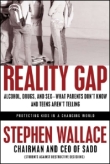 Reality Gap paints an alarming portrait of a modern-day adolescence filled with potentially deadly behaviors carefully hidden from the view of parents and other adults. But it is also a book about hope and inspiration, pointing to the incredibly powerful role that parents and other mentors can play in the lives of young people and highlighting the tremendous contributions that many teens are making to their families, schools, and communities. …
Reality Gap paints an alarming portrait of a modern-day adolescence filled with potentially deadly behaviors carefully hidden from the view of parents and other adults. But it is also a book about hope and inspiration, pointing to the incredibly powerful role that parents and other mentors can play in the lives of young people and highlighting the tremendous contributions that many teens are making to their families, schools, and communities. …